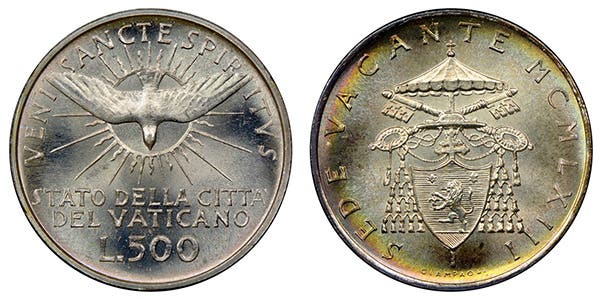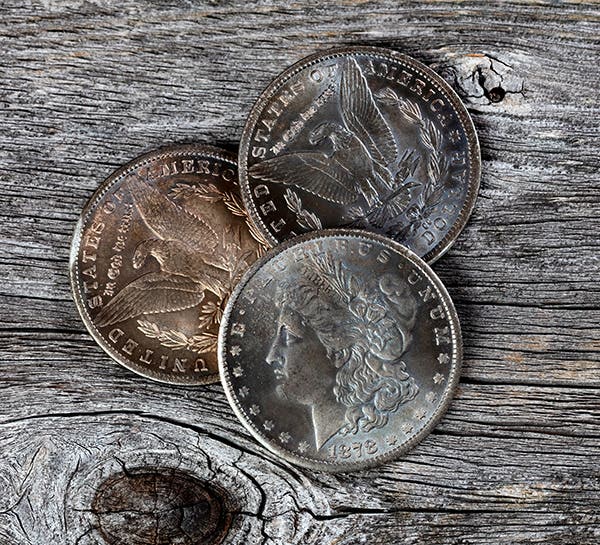Dollar sign written before numerals
Why do some countries put the denomination symbol like the dollar sign before the amount and some after? In the U.S., we write $10 and read it as ten dollars,…
Why do some countries put the denomination symbol like the dollar sign before the amount and some after?
In the U.S., we write $10 and read it as ten dollars, exactly the reverse of the way it’s written. It is nearly universal, tracing to the Romans who wrote it the same, but said it as “dollars ten.” Then there are the Portuguese and others who put the symbol in the middle of the amount.
I noted a French term, “fourre,” in reference to a coin. Can you translate it, please?
“Fourre” means a plated coin. The original meaning was a base metal coin plated to appear as bullion.
Is it true that Venezuela used plastic coins in 1895?
A New Jersey firm in that year supplied them with several sizes of celluloid chips, similar to poker chips, that circulated as small change. With such high inflation today, Venezuela uses no coins at all. Its unit of account is the bolivar. It takes nearly 67,000 to buy one dollar.
I have a copy of a Spanish 8 reales that is made of tinfoil on a cardboard disk.
It’s mock money, made in the Orient to pay the way of a dead person through the afterlife. More recently, they have become common and cheap.
Have potatoes been used as currency?
Yes, in Ireland, up to about 1800.
What was the first published reference to North America by that name?
The name “America” first appeared in print in the “Cosmographiae Introductio,” published in St. Die, France. On June 3-5, 1911, the town celebrated the 400th anniversary of that publication. Medals were issued in bronze and silver. Does anyone know if they celebrated the 500th anniversary in 2011?
Was the 1652 Massachusetts Pine Tree shilling actually struck in that year?
The coins were actually struck between 1667 and 1682. The 1652 date was used to keep out of trouble with the English king, since the colony had no authority to strike coins, but Britain had no king in 1652.
Wasn’t there an effort by the American Numismatic Association some years ago to get a commemorative coin to honor the Pine Tree shilling?
At the 1949 convention, the ANA passed a resolution and appointed a committee to work to get a Pine Tree Shilling Tercentenary Commemorative quarter to be struck in 1952 to mark the 300th anniversary of the 1652 coin. The measure was introduced in Congress in 1950 but failed to pass. Perhaps collectors will be more successful in 2052.
E-mail inquiries only. Do not send letters in the mail. Send to Giedroyc@Bright.net. Because of space limitations, we are unable to publish all questions.
This article was originally printed in Numismatic News Express. >> Subscribe today
More Collecting Resources
• Liked this article? Read more by subscribing to Numismatic News.
• The 1800s were a time of change for many, including in coin production. See how coin designs grew during the time period in the Standard Catalog of World Coins, 1801-1900 .








